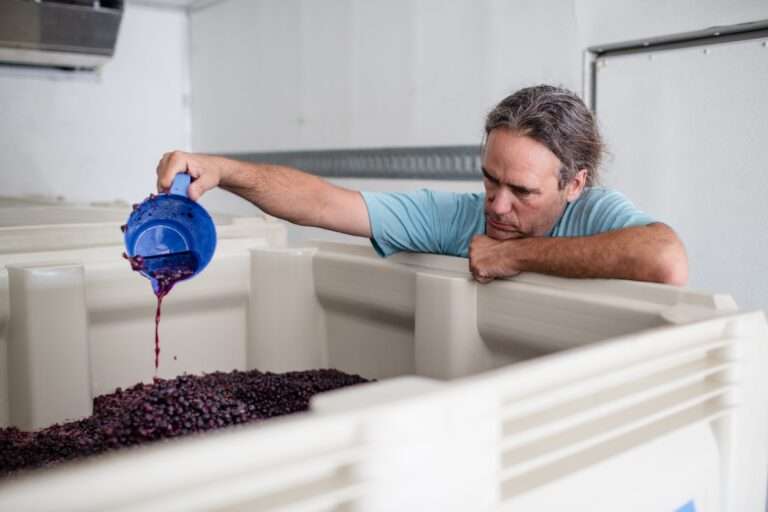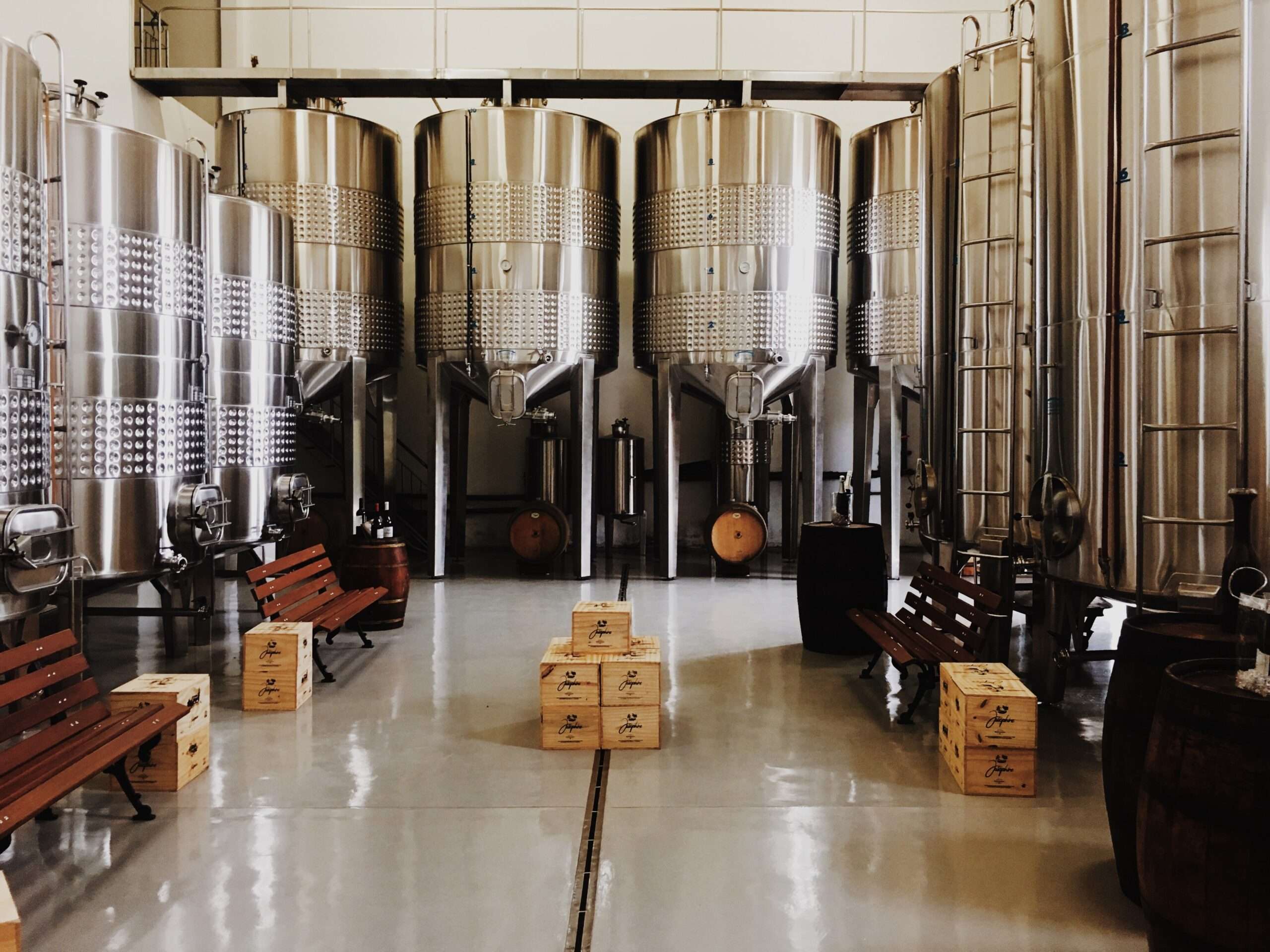Wine enthusiasts consist of two kinds: those who enjoy a drink and those who enjoy creating a wine for others to drink. I’ve had my foot on both sides and can attest that winemakers garner much respect for their efforts. What are your winemaking aspirations? Let’s explore them by looking at the pros and cons of being a winemaker.
Winemakers can personalize a wine for others to enjoy and find their thrill in growing good-quality ingredients. Winemakers have high operation costs and require significant capital investments. They work at least 10 hours a day, seven days a week for six weeks during harvest and pruning season.
Winemaking requires a lot of passion before it can become a success. It’s why winemakers work so hard – that, and it takes several years before they see any profit. As winemakers would say, “there’s a story behind every bottle.” let’s delve into the pros and cons of being a winemaker; the story, hours, challenges, expenses, and the salary you can expect.
A Couple Of Hours In The Busy Life Of A Winemaker
Many people enjoy the thrill of hosting people at home or work, and it goes down even better with a tasteful glass of wine. So, it’s not surprising that aspiring winemakers have reared their heads to claim some of that fame for themselves. While the grass may appear greener, it’s also true that being a winemaker takes a considerable effort, time, and significant capital investment.
What Really Goes Into Winemaking?
Despite the alluring appeal of making wine, it is a costly venture for both small and more prominent winemakers. A small-time winemaker might own an 8-acre vineyard, and they usually need to do a lot of the manual labor by hand. Of course, bigger vineyards opt to mechanize the process to make it more streamlined and increase productivity and output.
As an example, the grape-growing season may run from March through October, and these can sometimes be the busiest times of the year. Smaller vineyards utilize temporary or hourly field labor for high-demand jobs like pruning and harvesting. Typically, there is a reoccurring cycle that happens annually:
- January to March, the season of pruning. Pruning is when winemakers remove the previous season’s growth from the vine and prepare it for the coming seasons. It’s crucial to do it right because it will decide the vine’s quantity, quality, and long-term health for the following two seasons.
- March to May, buds break, and the first leaves form. When leaves appear, it signifies a new growth cycle, the period in spring when the vines awaken from their winter hibernation in the vineyard.
- May to July, the grapes bloom. The sunshine, favorable temperatures, and spring rains create an excellent climate that produces the first sign of grape life.
- July to September, Veraison. The veraison process refers to a stage in the growth cycle when grapes begin to ripen. They receive their sweet taste and change from green to purple.
- September to October, the harvest. The maturity of the grape, as evaluated by sugar, acid, and tannin levels with winemakers, determines when it is ready to harvest. Picking grapes by hand ensures that only healthy and undamaged grapes. Mechanized picking produces a speedier result but at the expense of precision and care.
In between these events, winemakers have to exercise proper management of the canes, ground and soil preparation, leaf thinning, irrigation, fruit thinning, fertilization, and types of spraying.
Winemakers must be able to multitask from one minute to the next while handling a large number of wines in varying stages of development. A top winemaker needs to consider wine production and how it enters the consumer’s environment – often by assessing lab results, engaging in marketing choices, and presenting wine to customers.
They must also manage cellar employees, monitor wines at various stages of fermentation, and prepare for future vintages; there are always many things to do.
What Are The Working Hours Of A Winemaker?
Winemakers work incredibly hard, especially during the pruning and harvest periods. The job often demands seven days a week for around six weeks, with two shifts that can last 12 hours or more. However, most of the time, regular shifts are 10 hours every day.
Due to the long, laborious working hours, winemakers often find balancing their work and personal lives extremely difficult. In fact, their wives have been dubbed “vintage wives” during harvest seasons because they very rarely see their husbands.
That said, it’s not all doom-and-gloom. Outside of essential seasons, they have their weekends and get to spend a reasonable amount of time at home.
Considering everything, winemakers are usually very passionate about their profession, and a good turnover of grapes is some of the most exciting pleasures of the career. If they receive good reviews or a reward for their accomplishments, it merely counts as an extra.
Should Winemakers Have Their Own Vineyard?
Remember that a vineyard refers to where grapes grow, while a winery is a place where the grapes get processed into wine.
The most significant benefit of winemakers producing their own grapes is that they can grow them in a way that complements a personalized style of wine. Furthermore, they can manage the vineyard to their own specifications, controlling essential decisions such as when to pick a harvest without debating.
Otherwise, winemakers who create a business that relies on purchased grapes will lose control over the most vital raw materials required for a successful wine. How would they know how many barrels or bottles to buy before harvest if they don’t have reliable grape contracts?
On the other hand, buying grapes provides them with great opportunities. It can be helpful in difficult vintages when they aren’t at the mercy of the vineyard they have, and they can buy what appears best to them.
They also need to spend less money on labor and equipment, and they may not need to acquire a completely new craft – after all, producing grapes and making wine are two very separate skill sets.
They also need to spend less money on personnel and equipment, and they may not need to learn an entirely new skill set – after all, growing grapes and creating wine are two very different things.
There is no clear-cut method of going about it; there are only diverse business ideas. Some wineries can afford to own vineyards, granting them a steady stream of grapes, resulting in stability and flexibility.
The Expenditure And Profitability Of Winemaking
The allure of owning a vineyard, a gorgeous winery with expensive bottles and a high-end reputation, and an expensive, opulent lifestyle, is undeniable. While those things are not entirely out of reach, it does take an incredible amount of resources to reach that point. Winemakers make on average $62,278 annually, and they work hard for every dollar.
The Preparation Period
Remember that wine is a long cycle product, with a base unit of 1 year. In other words, it requires a substantial upfront investment that only yields a return after several years and when you tick all the boxes. Consider the following aspects of preparation:
- Acquiring land, 1 year
- Preparing the ground and soil, 2 years
- Planting the vines, 1 year
- Vine maturing period, 2-3 years
- Harvesting and grape production, 1 year
- Wine aging, 1-4 years
- Bottling and sales
Business owners must reduce costs as much as possible to make a profit, including executing some tasks themselves. It takes at least ten years to start a vineyard and imprint your name on it. The shortest investment is three years, which is the time it takes for a bottle of red wine to mature.
The shoestring approach is the opposite side of the coin. It entails launching a brand and exploiting extra capacity from other vineyards to produce your wine, sometimes even using their wine. In this manner, you can concentrate on sales right away and develop demand for the winery you’ll eventually open.
Winemakers Have A Lot Of Operational Costs
Constructing a vineyard will have you dealing with construction costs and building commissions.
Furthermore, ten years of investment without any revenue before even selling the wine is a high price to pay. Most winemakers create goods that appeal to their own or reviewers’ preferences. You must project your style within five years if you use your own vines.
The machinery for stemming, crushing, squeezing, fermenting, and maturing the wine, and forklifts for transporting all the wine barrels and other items like fertilizer, insect spray, and hundreds of gallons of water requires a substantial capital investment.
Even if you’re still maturing the wine in barrels, the federal government will need you to start paying alcohol tax after fermenting the grape juice. To put it another way, if you create a lot of wine and age it for a long time, you’ll pay a lot of taxes. You must also keep precise records to guarantee that you pay the correct tax amounts.
Bad Weather And Winemakers Don’t Mix
The weather can and often does have a profound impact on the production schedule. A bad harvest due to harsh weather is disastrous because the winemaker has to wait until next year to try again. Delays affect the next harvest, overall success, and profit margins.
Some vineyards sell to wineries on a contract basis, which means they may sell some or all of their grapes to the same winery for several years. Others choose to sell their grapes on the spot market. Consequently, running a successful vineyard is challenging, especially for smaller vineyards, because the costs are high, and revenues remain uncertain at best.
Surprisingly, the percentage of wineries that fail is smaller than the specified number of failed new businesses. It may very well be related to the amount of planning that goes into creating a winery. While most companies can start in a couple of weeks or months, a winery takes several years of commitment.
If you go the conventional route of vines to the winery to sales, you’ll be selling products in roughly 7–10 years. Of course, this necessitates a large sum of money. Although having a lot of money does not guarantee success, the presence of substantial capital indicates that you may have a firmer grasp of what you’re doing.
What Happens When A Winemaker’s Wine Fails?
The popularity of grapes can vary from region to region. For example, Merlot may be unpopular in a specific location, so if you have a Merlot field, your options are to quit actively cultivating it since it’s difficult to sell or replant it to a different type. Remember that grapevines take three years to mature before producing a yield.
While many of the world’s best winemakers are comfortable with failure, acknowledge that a specific wine did not turn out as intended. It necessitates the resolve to discard the wine and sell it in bulk rather than providing clients with a sub-par product.
Admitting failure is challenging not just in terms of ego but also due to the nature of the business. It’s not easy to confess that you won’t have a Merlot the following year if your Merlot has been a best-seller for the last five vintage years. That again, it’s far better to admit it than to sell a subpar Merlot that will tarnish your reputation for years.
Furthermore, wineries should include a specific failure rate in their predictions to leave opportunities for innovation, experimentation, and the occasional admission of failure. Despite popular belief, failure is a healthy concept that teaches the necessary skills to improve and alter the next batch of grapes for an award-winning wine.
Conclusion
The pros of being a winemaker involve the excitement of growing good quality grapes and producing a personalized wine that they can share with other wine enthusiasts. However, it requires laborious days and weeks, substantially large sums of money, and many years of physical, monetary, and emotional investment to be successful.















